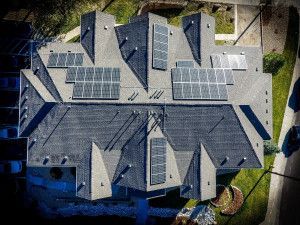4 Reasons Why Sustainable Buildings Are The Perfect Investment Opportunity

If you are looking for investment opportunities, it’s likely that you have already considered real estate. But have you thought about the benefits of building a sustainable building instead of buying an existing property? Whether you’re a seasoned investor or new to the market, embracing green construction is one of the most effective ways to invest in real estate, yet it’s a strategy that is often overlooked because the initial cost can be higher. However, the returns will be much greater. These are just some of the reasons why a sustainable building is a brilliant investment opportunity. For more insights on property maintenance and investment, visit Springfield Striping and Sealing.
Tax Incentives
When you are building an investment property, it’s important that you consider the tax implications. You can use cost segregation to write off the cost of the building much faster (visit https://www.tri-merit.com/services/cost-segregation/ for more information) but building sustainable buildings gives you even more tax benefits. There is a big push for more sustainable buildings and the government offers a lot of tax write-offs for green buildings, whether they are residential properties or commercial properties. For example, you can get $2,000 in tax deductions per unit for a green residential property. So, if you are building an apartment block, you can make some huge savings.
Increased Demand
If you are building a commercial building and trying to find businesses to rent units, you will find it so much easier if you build a sustainable property. There is a huge trend in green office space at the minute and businesses are increasingly looking for a sustainable base of operations. It benefits them because it helps them to reduce their impact on the environment and the running costs are lower as well. If you invest in an existing property that is not very energy efficient, you will have a hard time trying to find businesses that want to rent a space.
Compliance With Future Regulations
Regulations about energy efficiency are always changing and as time goes by, they will become stricter. As we look to the future, it’s important that we change the way that we use energy and more comprehensive laws about energy efficiency are one of the best ways to do that. It’s likely that a lot of old buildings will fall on the wrong side of regulations in the future and the owners of those buildings will be forced to retrofit their properties to bring them up to standard at their own expense. However, if you invest in buildings that are built with sustainability in mind, you will already be compliant with future regulations and you won’t have to cover this cost. You can find the current green building regulations at https://www.epa.gov/smartgrowth/ .
It’s Better For The Environment
Even though there are plenty of financial benefits to investing in sustainable buildings, you also need to consider the moral aspect. We all have a responsibility to reduce our impact on the environment and if you are an investor or a business owner that is funding new buildings, you have an even bigger responsibility to make sure that they are sustainable. Although making small personal changes will help to improve the situation, it’s more important that those with the resources to drive large-scale changes do so.
If you are looking for a real estate opportunity, sustainable buildings are always the best choice, both financially and morally.


